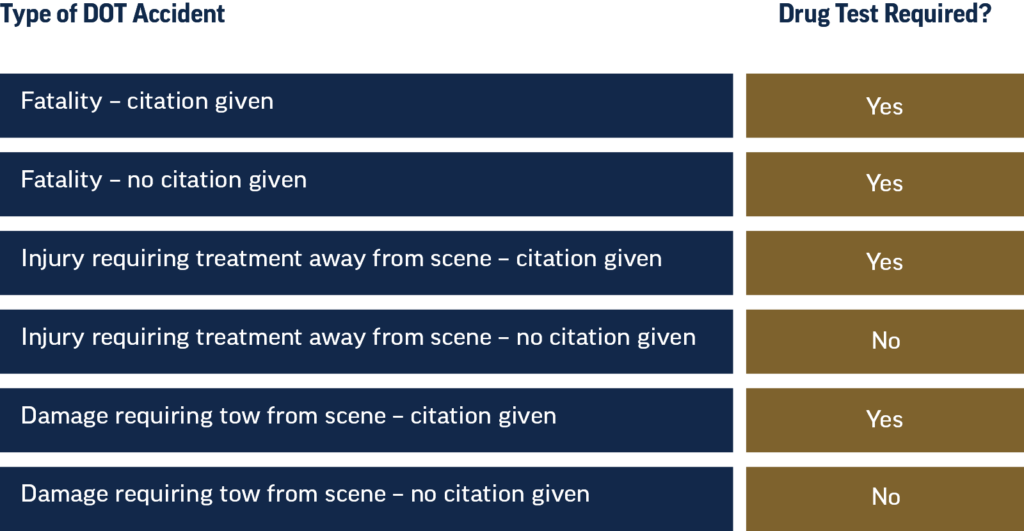Everything You Need to Know About DOT Drug Testing
Posted on March 5, 2021
Proper compliance with DOT drug testing is essential for drivers. In this blog, you’ll learn all about the guidelines and testing process.
WHEN IS A DRIVER TESTED?
-
- Pre-Employment/Sign-On: Drivers must pass a drug screen before they can operate a CMV.
- Random Selection: The percentage of drivers required to be tested through random selection can change and is dependent upon the number of tests that previously came back as positive. Information on the increase and decrease of drivers tested can be reviewed in section 382.305 in your green book or the FMCSA website. Even if you are self-employed and the only employee, you are still required to be tested as part of a consortium.
- Post-Accident: A test will always be required if:
- There is a human fatality
- There is bodily injury requiring treatment away from the scene and the CMV driver is cited
- There is a need to tow vehicle(s) and the CMV driver is cited
There could be a need to test after being released from the scene if circumstances change. Alcohol can be tested for up to eight hours after an accident occurs, and controlled substances for up to 32 hours after an accident occurs.
- Return to Duty: Required for drivers who tested positive, refused, or violated 49 CFR 382 B and have completed the return-to-duty process with a DOT-qualified Substance Abuse Professional (SAP). The test will be directly observed, and a negative result is required prior to driving.
- Follow-Up: After the return-to-duty negative test, follow-up tests are done as prescribed by the SAP for a minimum of six tests in twelve months, though they can be extended for an additional four years.
WHAT SUBSTANCES DO THEY TEST FOR?
In addition to blood alcohol (.02 and greater), urine specimens are checked for marijuana, cocaine, opiates (opium and codeine derivatives), amphetamines/methamphetamines, and phencyclidine (PCP). Employers/companies can still do their own testing for these and other substances, and they may not be urine tests. These tests must be labeled as being based on their “independent authority.”
WHAT HAPPENS WHEN YOU’RE REQUIRED TO TEST?
Once you are notified that you are required to go for testing, you must go immediately to the collection site. Not going to the collection site or leaving the collection site before the process is completed is considered a refusal. Refusals are considered positive tests.
Circumstances surrounding shy bladder allow you three hours to provide a sufficient sample at the testing site. If that is not completed, the test is stopped, relevant parties are notified, and you have five days to obtain an evaluation from a licensed physician as to why you could not provide a sample. The MRO must receive the evaluation and any relevant medical records to make a determination if the test is to be cancelled or considered a refusal.
WHAT HAPPENS IF YOU HAVE A POSITIVE TEST?
If you receive a positive drug or alcohol test result, you will be removed immediately from operating a CMV on public roadways and from any DOT safety-sensitive jobs. To regain the ability to perform DOT safety-sensitive duties, you must first complete an SAP evaluation, referral, and education/treatment process. Be aware that your employer or carrier is not required to provide these services to you, and they can be time-consuming and costly.
For more information regarding testing programs, visit https://www.transportation.gov/odapc/part40
For information regarding substance abuse help, please visit https://www.samhsa.gov/find-help/national-helpline
Categories: Back Office, Trucking

